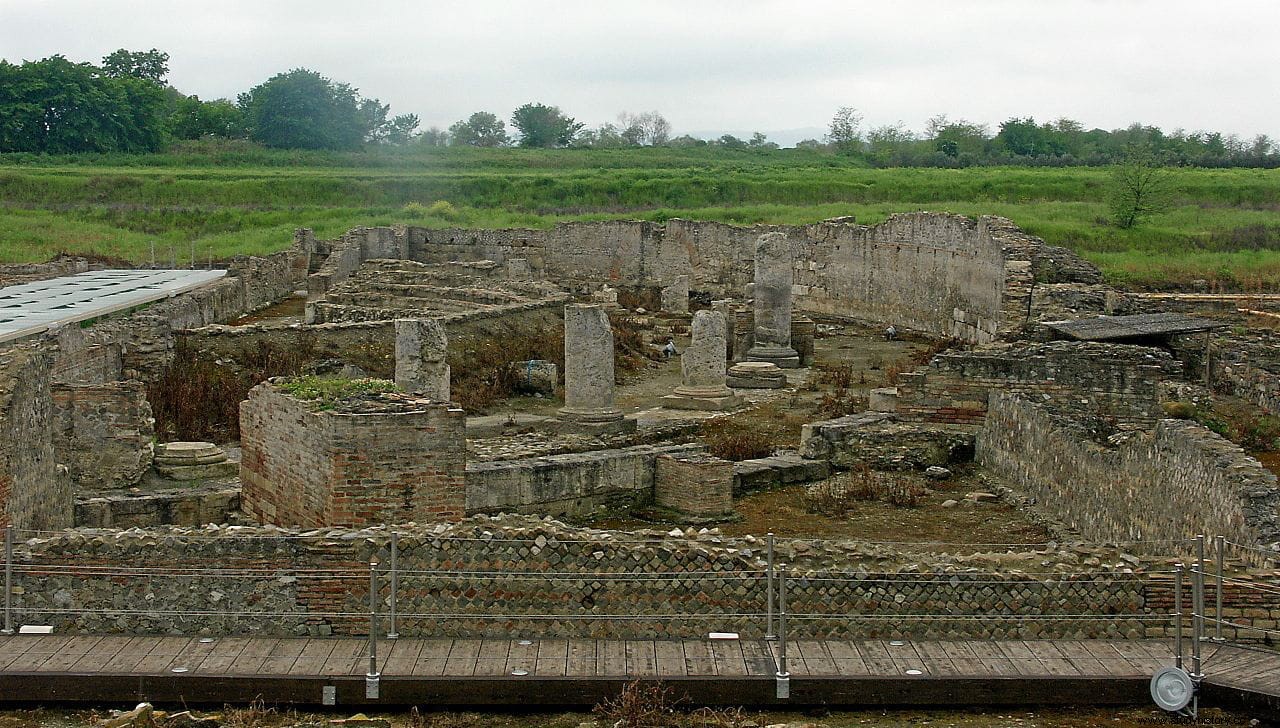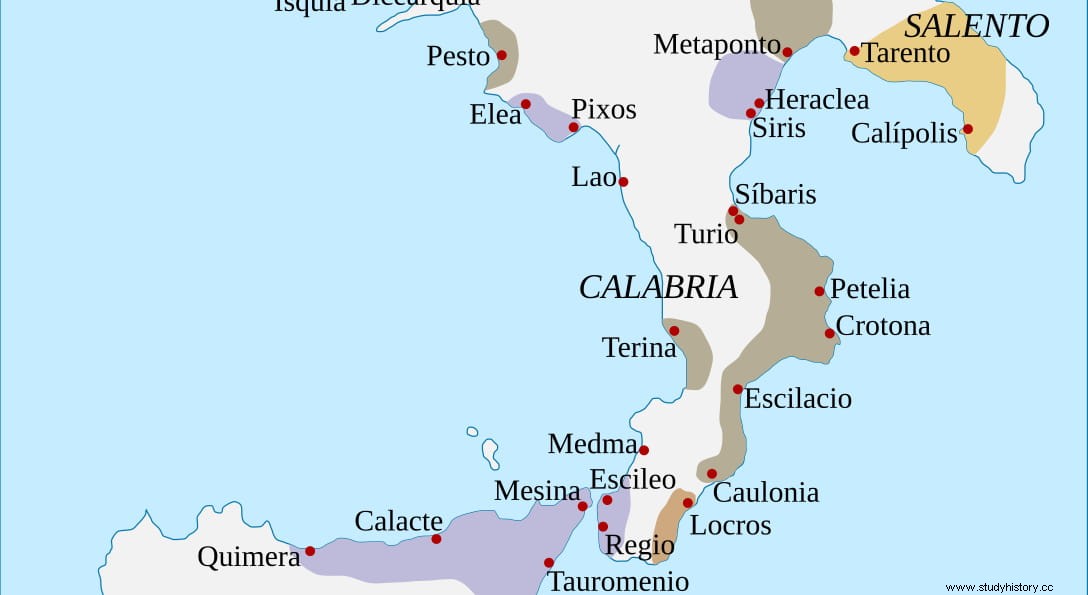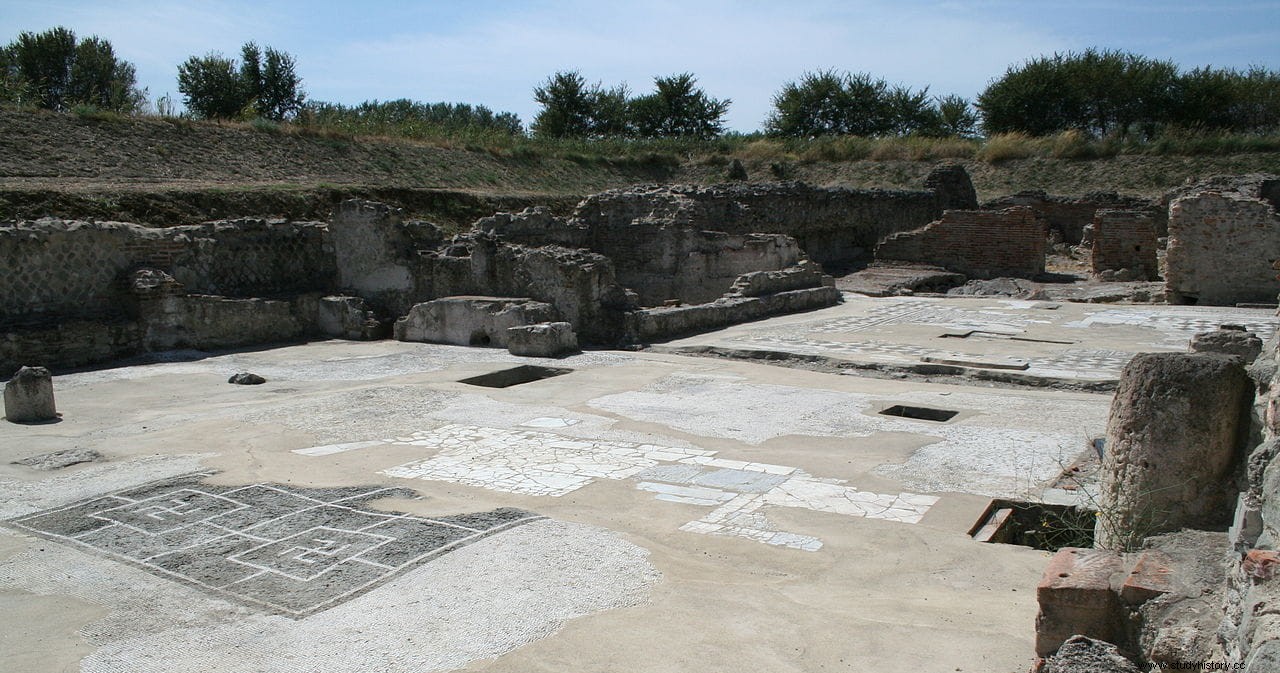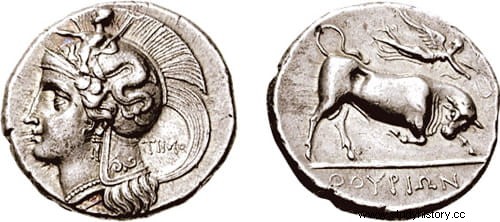Pericles dreamed of creating a Panhellenic city and for this he enlisted some of the best Greek intellectuals of the time.
The story begins around 720 B.C. when the Achaeans of Helice and Troezen founded a colony in Magna Graecia, at the western end of the interior of the Gulf of Taranto. They call it Síbaris and, little by little, it grows and dominates the surrounding regions. Trade flourishes and wealth abounds. Its inhabitants lead a quiet life surrounded by luxuries. They get used to exotic delicacies and rich fabrics, to gold and silver even for the most trivial objects.
So much so that, according to legend, there comes a time when his aversion to work and his taste for rest is such that they prohibit trades such as blacksmith or carpenter, too noisy for the tranquility of the city, and even the introduction of animals such as the rooster, for his obsession with causing a stir at dawn. There is a reason for the term sybarite has survived to this day as a lover of luxury .

But there was a problem. Shortly after the founding of Sybaris, another group of Achaeans, this time from Ripes and following instructions from the oracle of Delphi, had founded the city of Croton (present-day Crotona), at the outer western end of the gulf, a relatively short distance . At first both cities were allies and together they conquered and destroyed other cities. They prospered and collaborated, even Pythagoras established at Croton around 540 B.C. the philosophical school of him.
Things went awry around 510 B.C. That year war broke out and the army of Croton, led by Milo, a disciple of Pythagoras, massacred that of Sybaris in the battle of the Traeis river. Then they diverted the course of the Cratis River to flood the city, which was destroyed, and most of its inhabitants killed. Only a small number managed to escape.
Things at Croton were no better. Shortly after the victory over Sybaris, a revolt broke out against the oligarchic government, which triumphed and led to the establishment of democracy. Pythagoras was expelled from the city for his collusion with the oligarchy, or according to other sources he would have died during the riots.

In 452 BC, some 42 years later, the surviving Sybarites and their descendants, with the help of some Thessalians, returned and attempted to refound the city. The new Sybaris it grew and prospered so fast that it aroused Croton's envy, and he managed to drive them out again.
Another five years passed, during which the unfortunate sybarites dedicated themselves to looking for an ally with enough entity and capacity to face their enemies. First they tried it with Sparta, without success. They then headed to Athens, where Pericles saw an opportunity to fulfill his dream of creating a Panhellenic city over the ruins of Sybaris, with settlers from different parts of Hellas, chosen for their ability and intellect.
Everything was organized on this principle and under the promise of resettling the old Sybarite inhabitants, and the new settlers recruited by messengers sent throughout Greece, among whom were a small number of Athenians, were sent under the command of Lampon and Xenocritus. Among them were the historian Herodotus, who was to contribute his knowledge of the world and history, and the orator Lysias, for his political experience (both friends of Pericles). As the architect in charge of planning the city, Hippodamus of Miletus was hired, today considered the father of urbanism. The laws of the new city and its constitution were drawn up by the sophist Protagoras, and established, for the first time in history, public education Free and compulsory for all citizens. An achievement that the world would take centuries to recover.

According to Donald Kagan in his book on Pericles and Athenian Democracy, this idea of Panhellenism is unprecedented , but it fits with the ideas of the Athenian politician expressed only a few years before. Some scholars believe that in reality everything was a ruse in favor of the expansionism of Athens, but the evidence and the subsequent history of the colony show otherwise. It would have been a kind of diplomatic message, to the effect that Athens had no imperialist ambitions.
Furthermore, Rosaria Vignolo Munson believes that putting Lampon at the head of the colony, recognized for his religious orthodoxy, in close cooperation with Protagoras, who championed scientific innovation, constituted a social and political experiment in which Pericles wanted to combine diversity, equality and harmony.
At first, the new settlers settle in the old Sybaris, but soon they abandon it without knowing the reasons very well, and settle in a nearby place where there was a spring called Thuria . It will be there, in the year 443 BC, where the new city of Turios is founded. (Thurii or Thurium ).
Problems begin to arise immediately, as the foodies claim political privileges over the newcomers, who end up cutting their losses and expelling them from the city. Not only that, they sign a peace treaty with Croton and the new city begins a flourishing period. New settlers constantly arrive from all over the Greek world, and Thurian society is organized into ten tribes named according to their members' origins:Arcadians, Achaeans, Eleatas, Boeotians, Amphictyonians, Dorians, Ionians, Athenians, Euboeans, and Nesiotes.

Shortly after its foundation, Turios engaged in a war with the Spartan colony of Taras (present-day Tarentum), leading the new army to the Spartan general Cleandridas, who had arrived in Turios after being expelled from Sparta. His military successes force an agreement, and henceforth Turios would remain neutral in disputes between Athens and Sparta. In fact, it was to Turios where Alcibiades also fled so as not to be tried in the Athenian city. During all that time the city was a refuge for exiles, persecuted and deserters.
At the end of the 5th century B.C. Turios begins its slow decline, with the threat of the surrounding towns, but always managing to remain independent, until finally around 356 B.C. without another remedy he puts himself under the military protection of Rome. His only mistake throughout history would be siding with Hannibal in the Second Punic War , around 212 BC Rome did not forgive the betrayal and, in 194 B.C. He founded his own colony on the walls of the devastated Turios, which he gave the name of Copies . Pericles' dream was over.
Today the exact location of Turios is uncertain. Like Síbaris and Copias, they were all progressively covered by fluvial sediments from the Cratis River for 2,100 years. In the 1960s, archaeologists began to uncover ruins in the area, but until now they have not been able to determine which parts correspond to each of the superimposed cities. Somewhere among these ruins, in the agora of Turios, is found, according to the Suda, the tomb of Herodotus, the father of historiography.
